HUNTINGsmart! USA Knowledge Base
Module 10 - WILDLIFE
MULE DEER
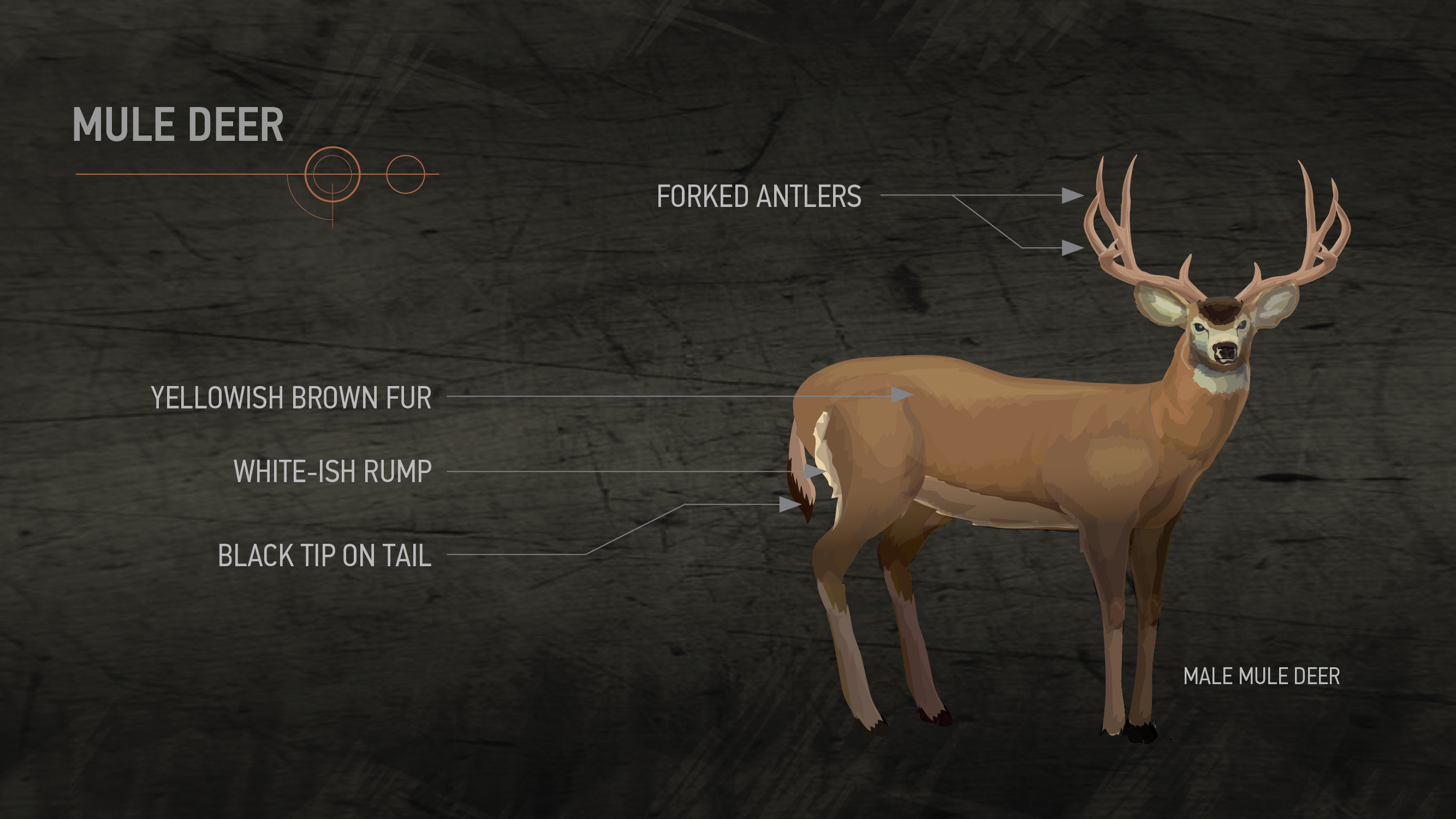

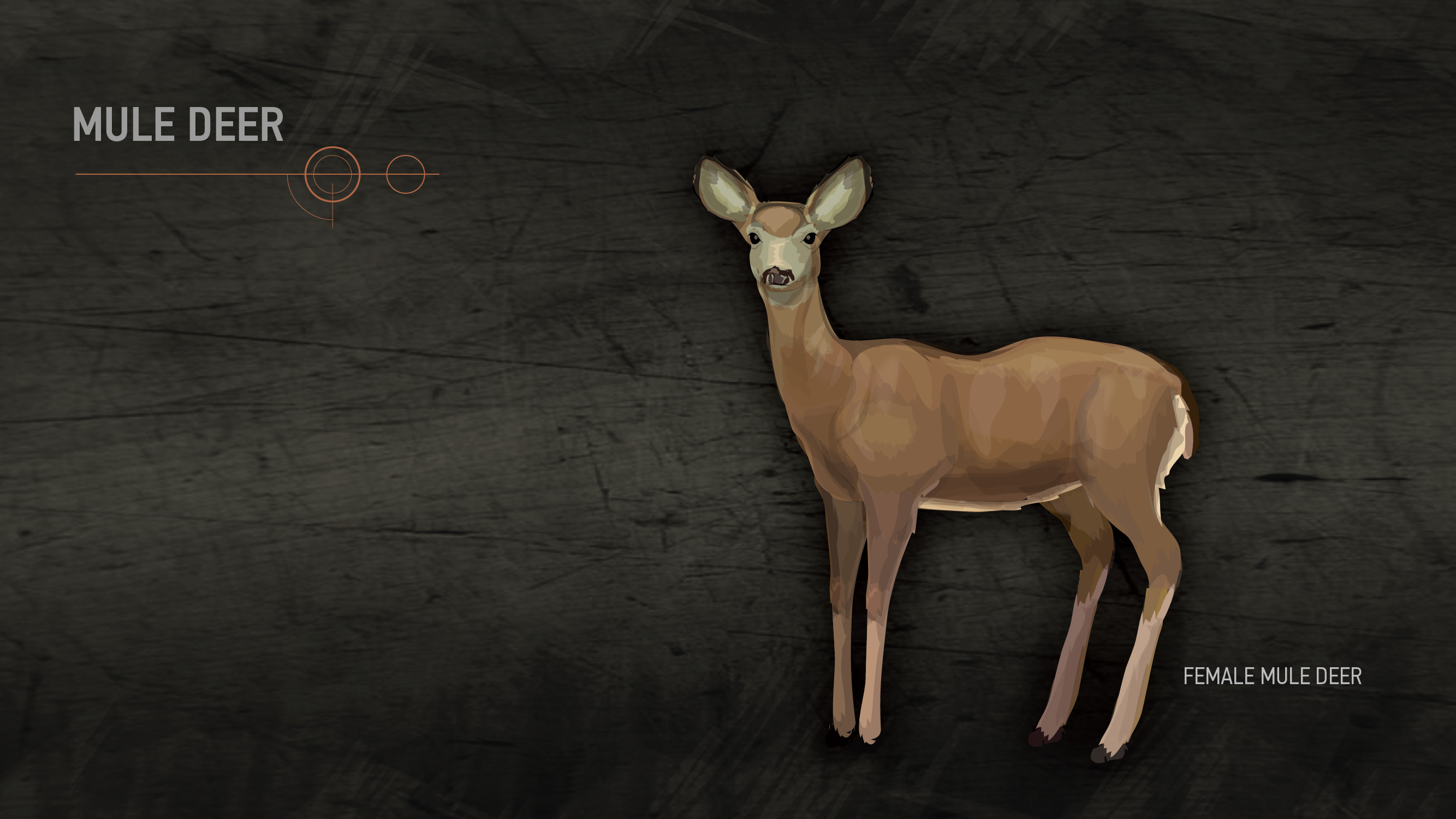
A smaller, stalkier version of their white-tailed friends, the ‘muley’ is a west coast deer.
Identification
Muleys get their name from their mule-like ears which are about 3/4 the length of their head. They also have a black mask on their forehead area that stands out against the rest of the greyish color on their face. Their fur is generally a yellowish-brown color in the summer but changes to a greyish color in the winter. They have a whitish-colored rump and a black tipped tail, which unlike white-tailed deer, muleys actually tuck down when running. Male muleys have bifurcated antlers. This means they fork out as they grow, rather than growing off a main beam, like the antlers of white-tailed deer.
Muleys weigh anywhere from 130-280 lbs., with females on the smaller end of the scale. They also have cloven hooves, which leave a heart-shaped track, like the track of a white-tailed deer.
Mule Deer Hunting Tip: Stay Cool
Mule deer have adapted to survive in desert-like environments. So, they will always be the most active in the early morning and late in the day when the temperature is less hot. So, save yourself from heat stroke and hunt muleys when it’s cool.
DIET
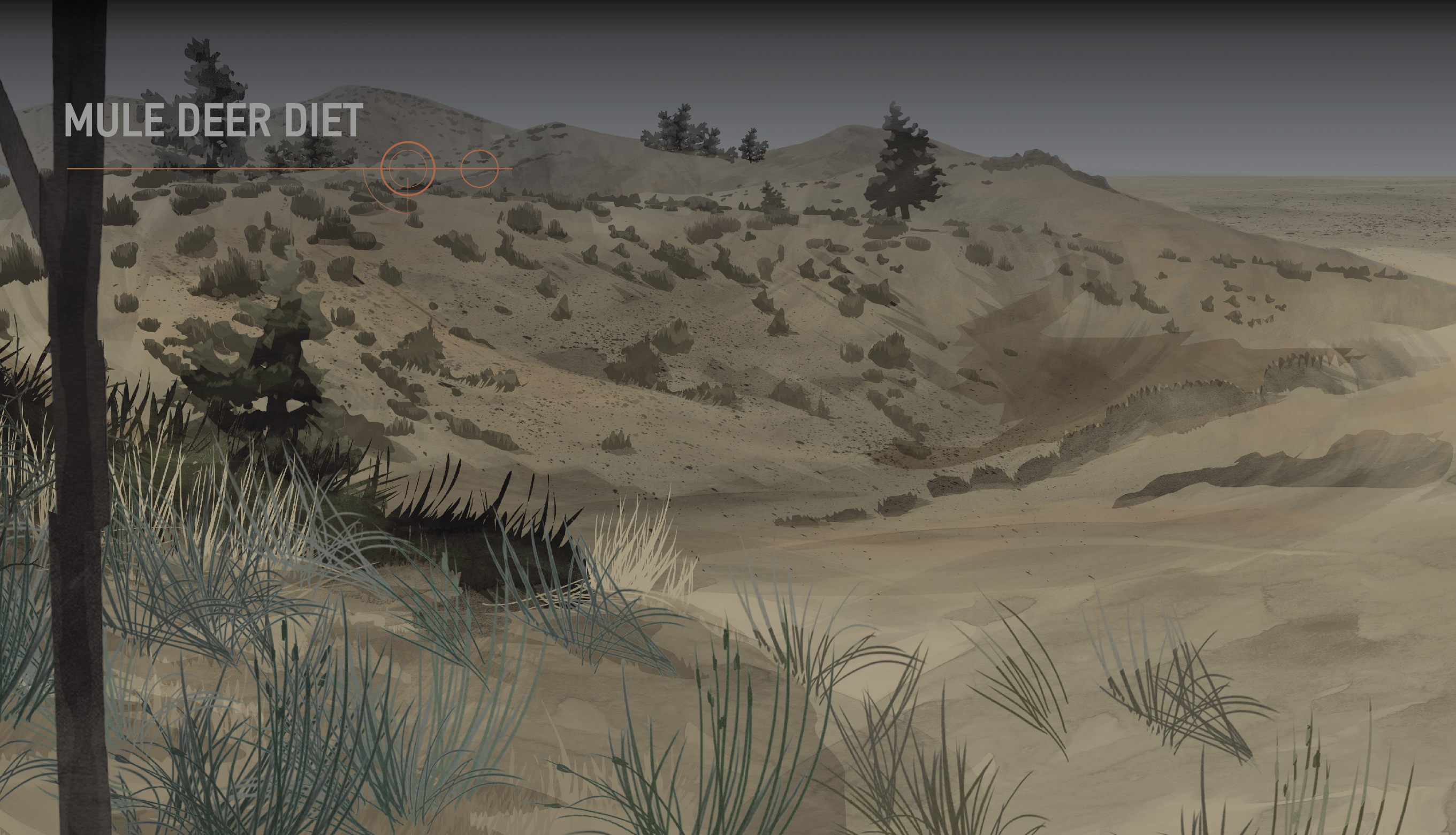
Mule deer are herbivores and will nibble on just about any kind of vegetation. Their diets can change significantly depending on the vegetation that’s available in the area. During most of the year (spring, summer and fall) they’ll opt for grasses, weeds, moss, flowers, and leaves from tree branches and shrubs. Muleys love grasses, so they are much more likely to be found feeding in open field areas than in heavily forested areas. Think about this when you’re planning out your hunting trip.
HABITAT
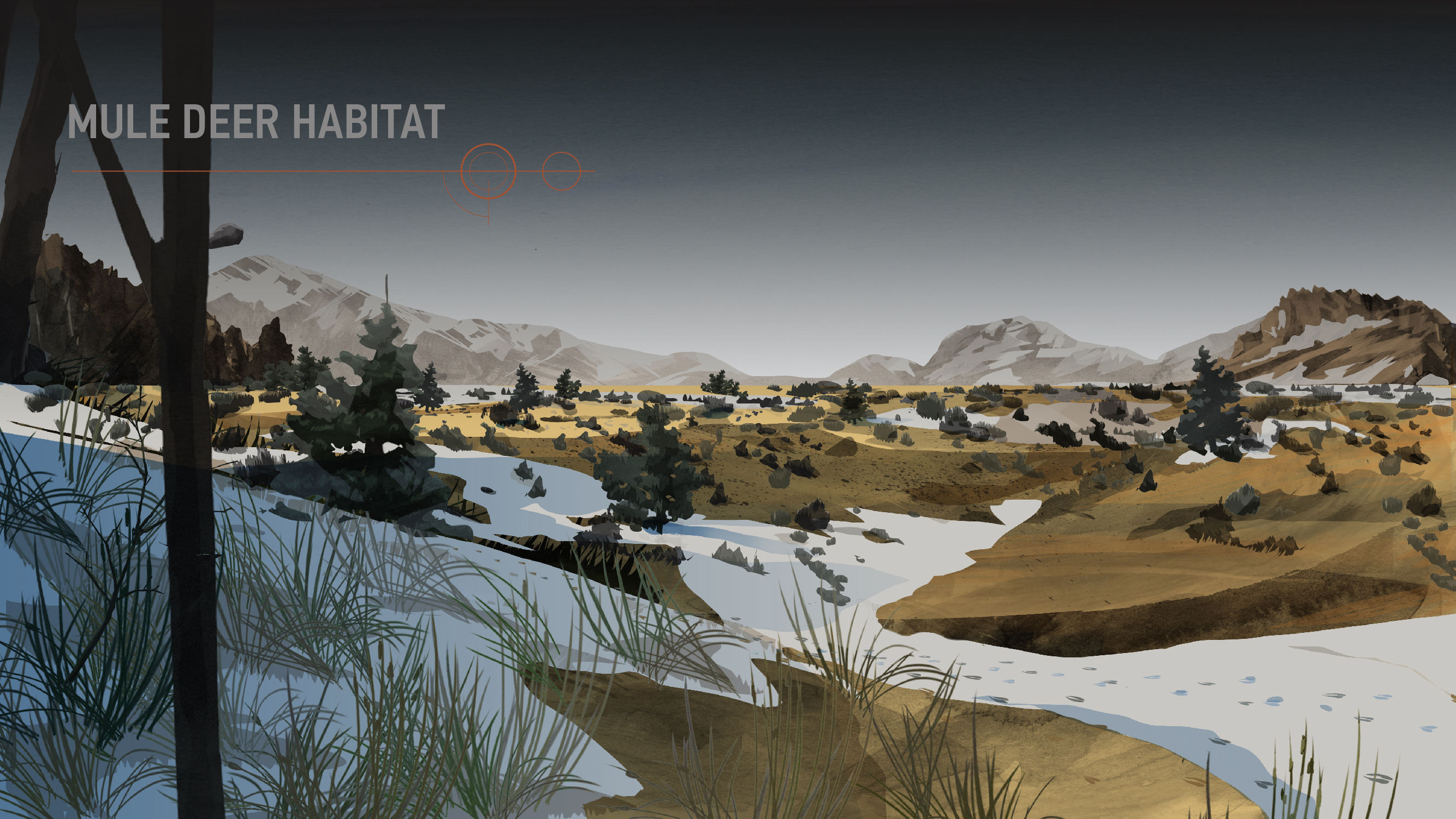
Muley’s are distributed all throughout western North America. They tend to choose mountain meadows in the summer when the weather is hot. Although they prefer higher altitudes, they will come down from the mountains to munch on the grasses of open plains during the months when the weather cools down. They make a home of areas where there is rugged terrain and brushy vegetation—places where the plant life can serve as both their food source and their cover.
The home range of a muley can vary in size from a few hundred acres, up to a square mile, or more. They are serious roamers, traveling great distances during the summer and fall months, either looking for food, their next girlfriend, or switching up their home range in preparation for the change of season. Additionally, mule deer tend to be solo creatures, so this means you’ll be looking for a single roaming buck in western terrain… and that may be challenging. Just remember to stick to the basics—look for a food and water source and focus the hunt to those habitat areas that will suit the needs of a mule deer, depending on the time of year.
SCAT
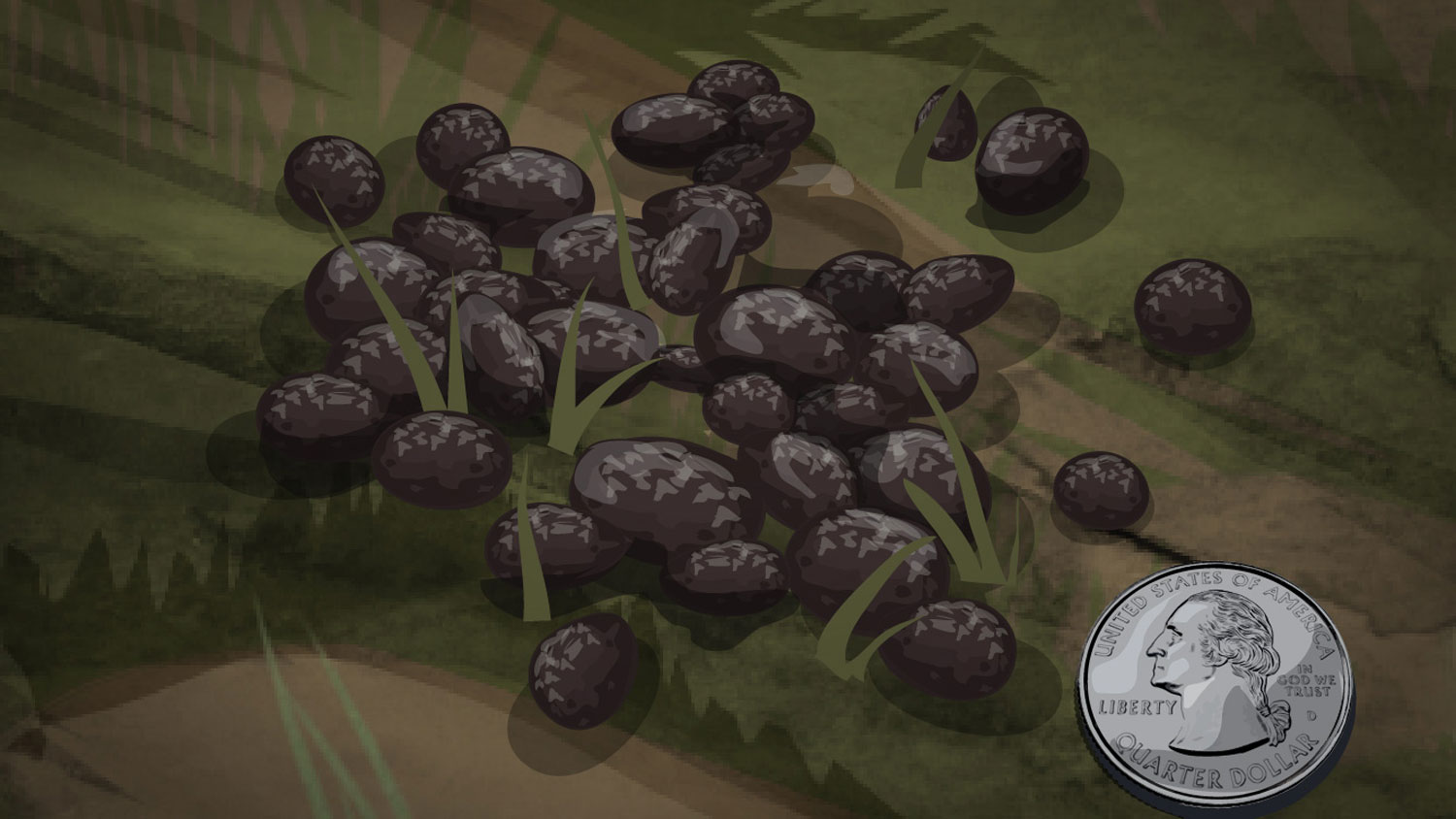
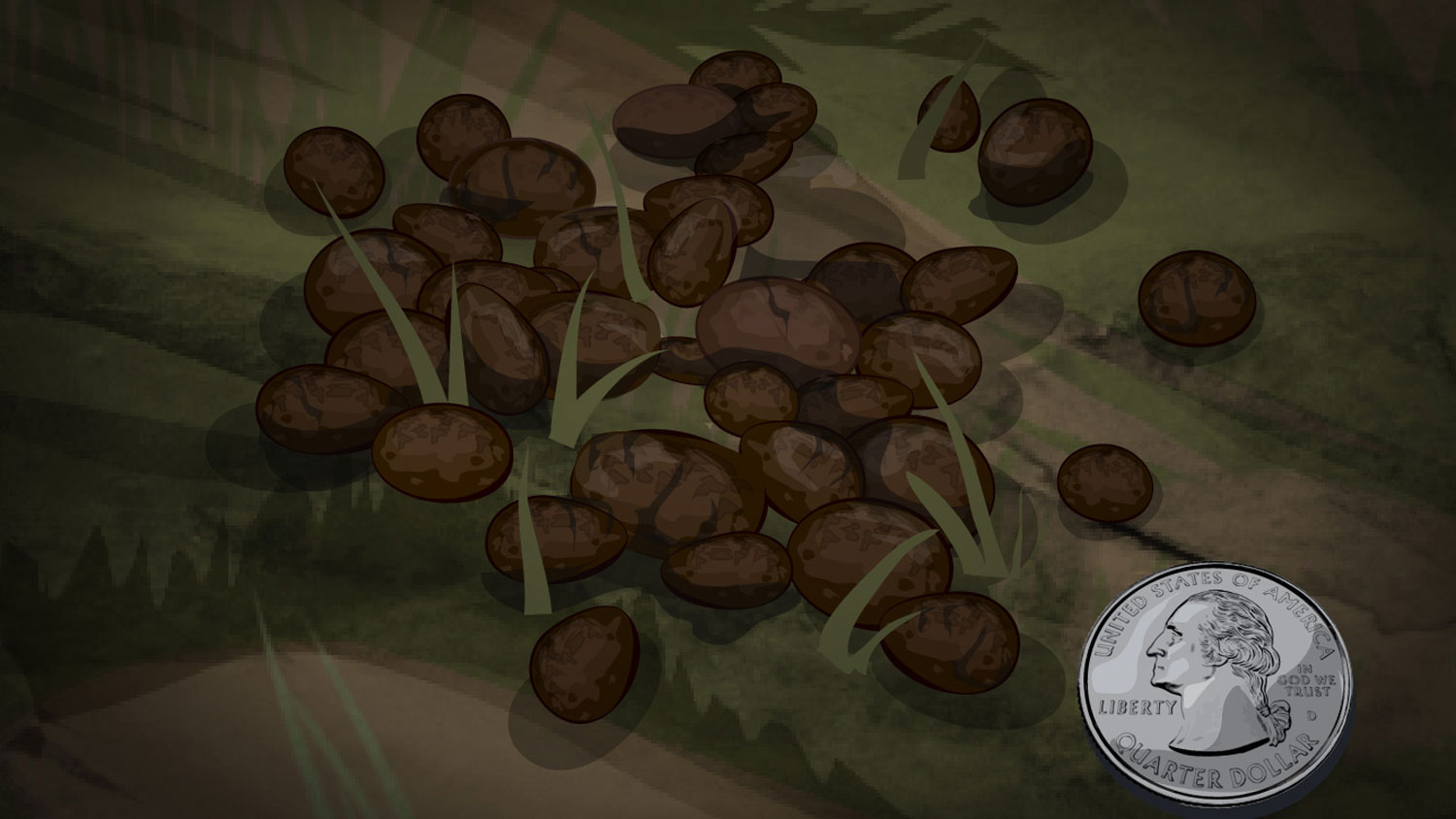
Mule deer poop can tell you where the deer are. You’ve just got to know what you’re looking for. It’s pretty straightforward—muley scat is a pile of pellets. If you’ve found smaller pellets, you’re likely following a smaller deer. What you want to find are large piles of ¾-inch (ish) pellets—the ones dropped by big bucks. When you find big pellets, look closely to figure out how fresh the pile is. Dry scat is usually a few days old. However, if the pellets have a wet, shiny look to them, they were probably dropped between 6-12 hours ago or less. So keep quiet and start hunting for that buck—cause he’s in the neighbourhood. Oh and don’t be fooled—humidity and heavy rain can make old, dry scat look shiny and fresh.
SCRAPES AND RUBS
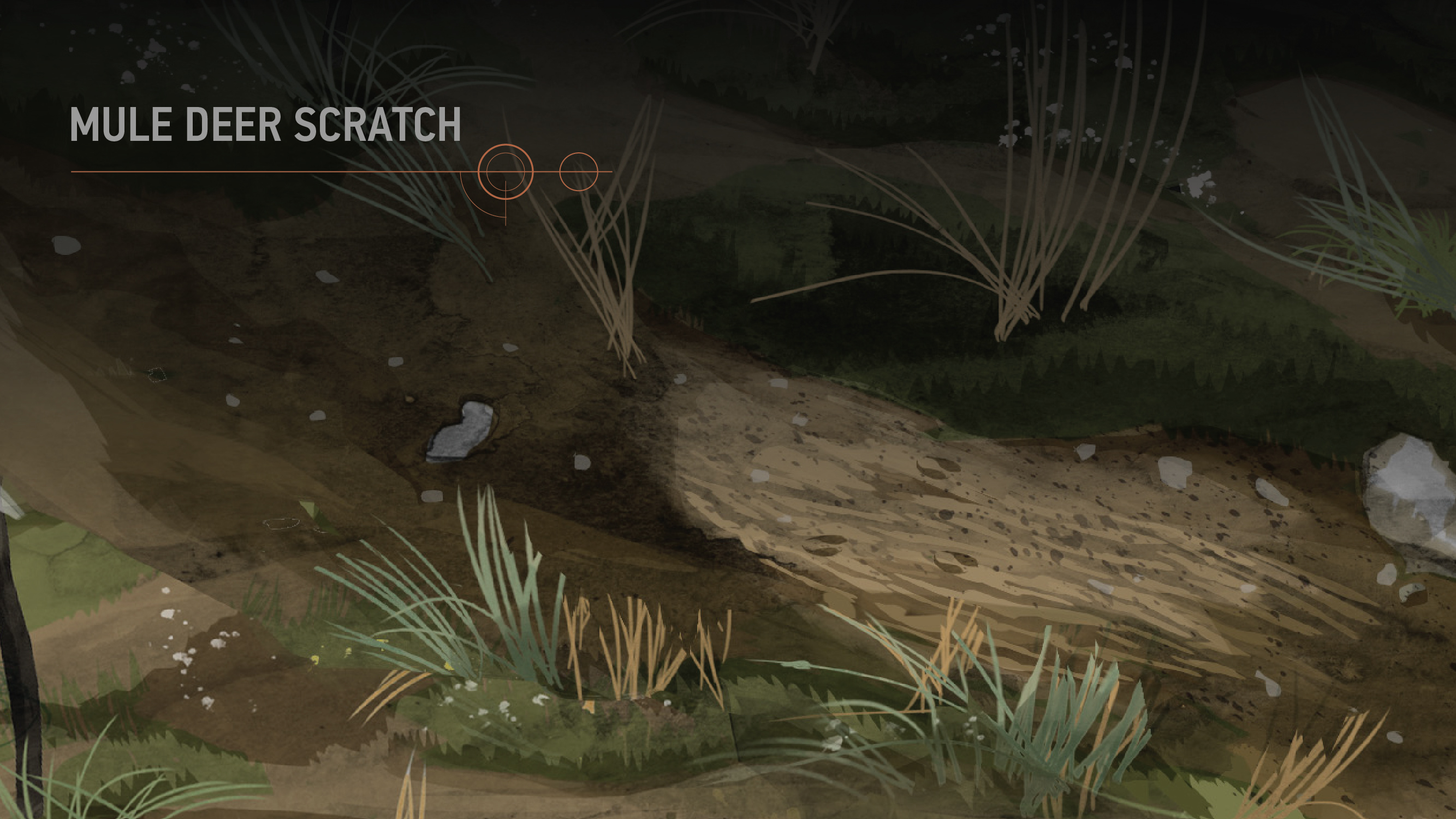

If you’re looking for a buck, you should be looking for rubs and scrapes. A rub is the result of a buck rubbing his forehead and antlers against a bush and basically demolishing it. You’ll notice deer rubs when the bucks are trying to get the velvet off their antlers to freshen up for the ladies during the rut (the late summer to early fall period). They also make scrapes during the rut. Scrapes are small patches of earth that muleys scratch up and pee on to mark their territory. Look carefully for these markings—mule deer are much less aggressive than white-tails when making scrapes, so they’ll be tougher to spot.
CALLS
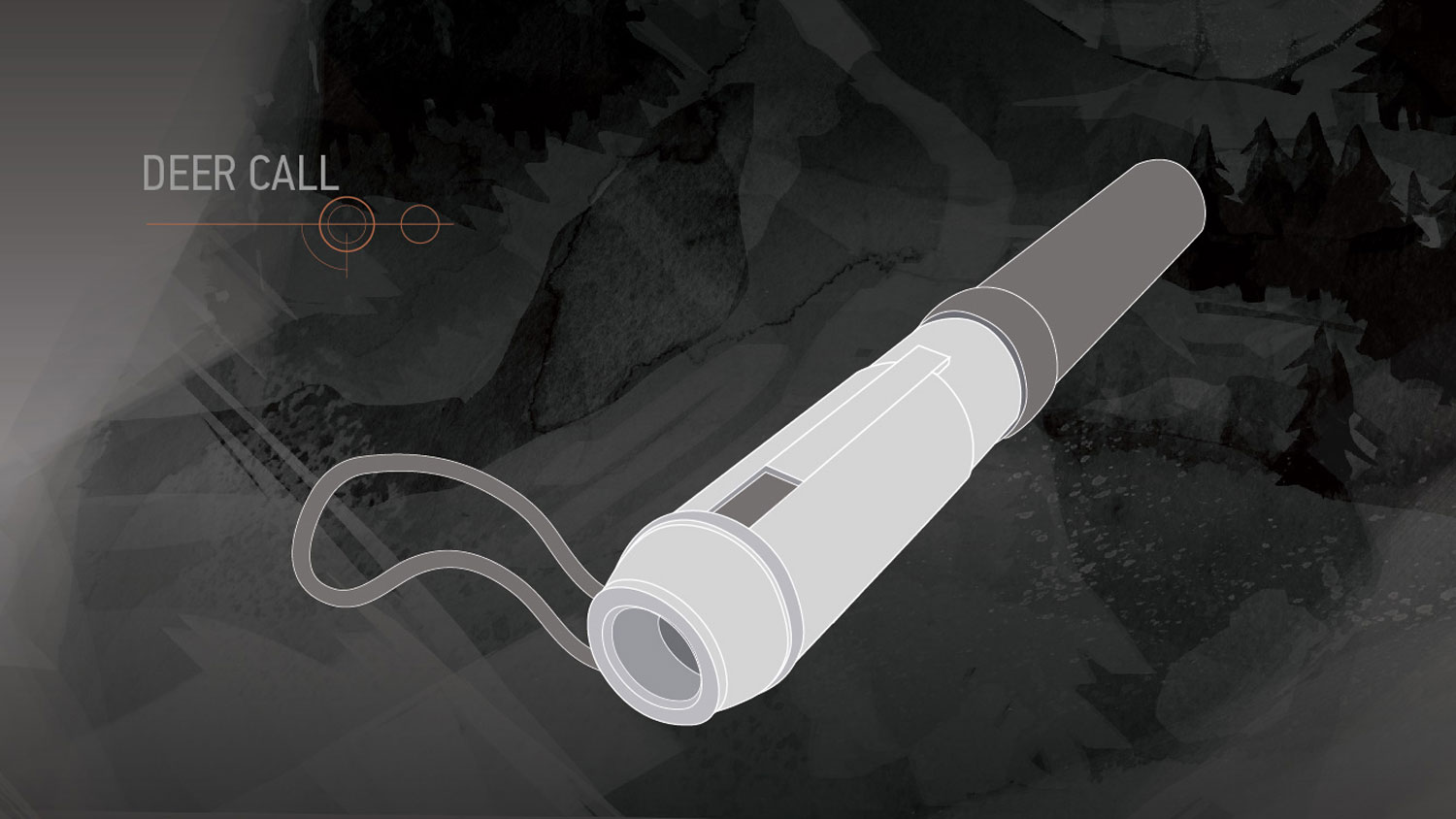
Muleys are also much less vocal than white-tailed deer and they don’t rely as heavily on vocalizations to communicate. Due to their not-so-chatty nature, you may find that muleys are less responsive to deer calling techniques.
Some hunters say the ONLY time to use a deer call to get a muleys attention is during the rut season (peaking in November-December). During this time the bucks will be moving around, looking for ladies and watching out for other bucks.
Some hunters swear by a certain type of call and others like to mix it up based on their gut instinct. It’s not an exact science. Get started by trying out the following call techniques:
- The ‘Doe Bleat’:
- The ‘bleat’ is how the doe says “hey there” to bucks. It’s also how she calls to her fawn or to the group. It’s a general sound but it’s also a pretty lady to a buck. Master the ‘bleat’ and the bucks will come looking for you.
- The ‘Tending Grunt’:
- This is the sound a buck makes when he’s asking a doe to stop travelling so he can breed her. Muley bucks are competitive—if they hear this sound, they’ll come running to try and snatch the girl.
- The ‘Dominant Grunt’:
- This call is best used during the rut season. It’s the sound bucks make when they’re challenging each other. During the rut they’re territorial and restless so this is how you say, “BRING IT” to the big boys. It’s an invitation to fight.
- The “Snort-Wheeze”:
- This call mimics the sound made by an aggressive buck. It’s another good call to use during the rut because it invites worthy challengers into the ring, or in this case, the shooting range.
- Antler rattle:
- By rattling either fake or real antlers together, you can mimic the sound of roughhousing bucks. This is the sound of a challenge and it may bring a buck your way who wants to check out the activity. You can buy these or you can just use a pair of antlers you may have kicking around from an old hunting trip.
Mule Deer Hunting Tip: The Muley Rut
The best time to use a deer call or antler rattle to bring a muley to you is during the rut. Peaking in November-December, this is the time of year that there is a lot of movement, distraction, aggression and competition among the mule deer populations. The big bucks will tune in quickly to the sounds of a pretty lady or a challenging buck.
Guns, Ammo & Your Target
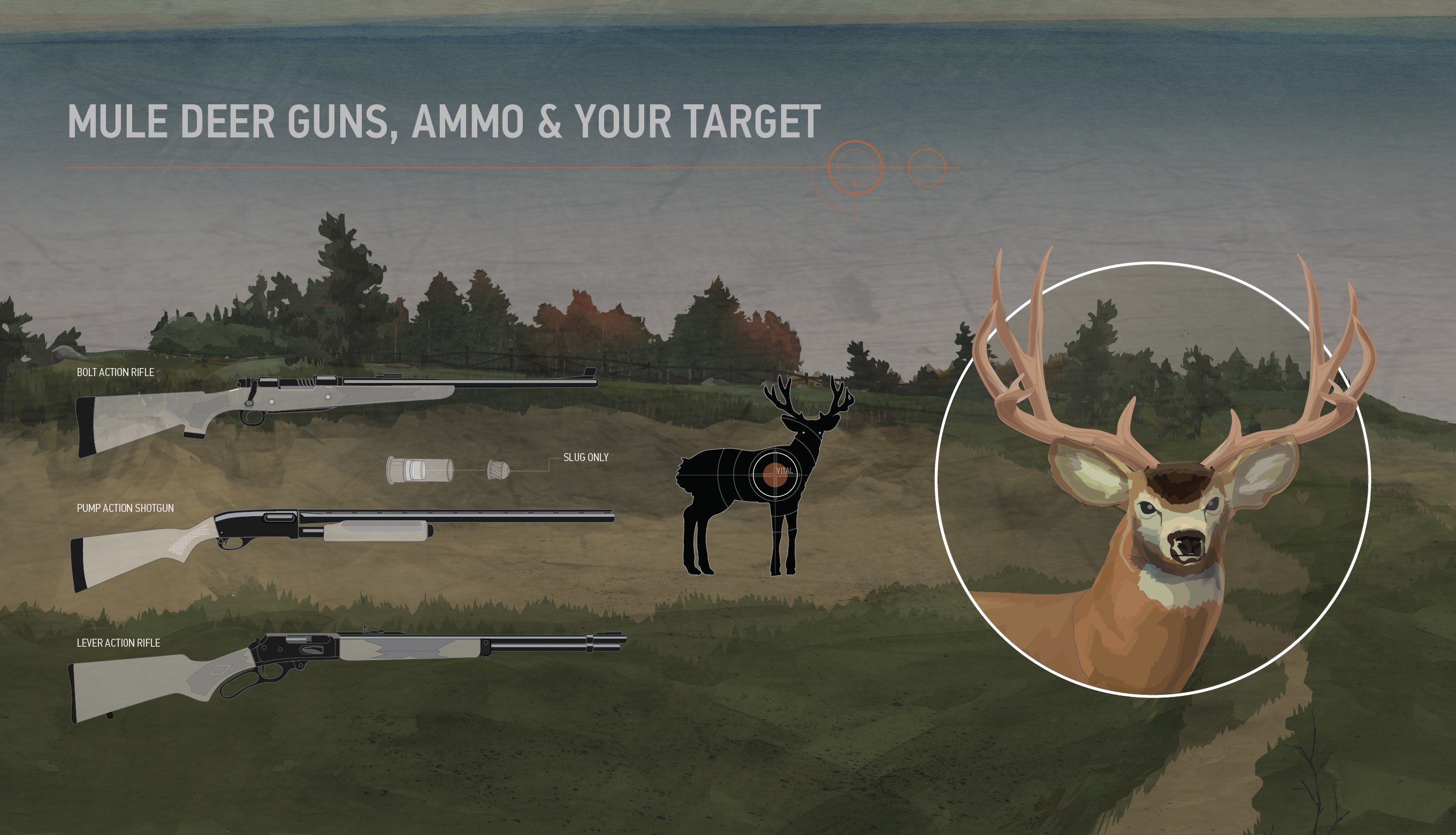
To kill a muley quickly and efficiently, your shot must be accurate. A rifle with a strong action and a good quality scope will deliver the best performance. Bolt action and lever action rifles are the best options for deer hunting. For your ammo, the trick is to find the right balance between expansion and penetration. You want the bullet to travel deep inside the animal, to mushroom once inside and to cause hemorrhaging. There are a variety of deer hunting ammunition options out there, but the minimum calibre for deer hunting is a 0.24—anything less won’t pack the punch you’ll need. If you aren’t sure, talk to a pro to see what the best ammo option is for your type of rifle.
Bowhunting? A compound bow or crossbow with sharp broadhead arrows will do the job.
VITAL ZONES
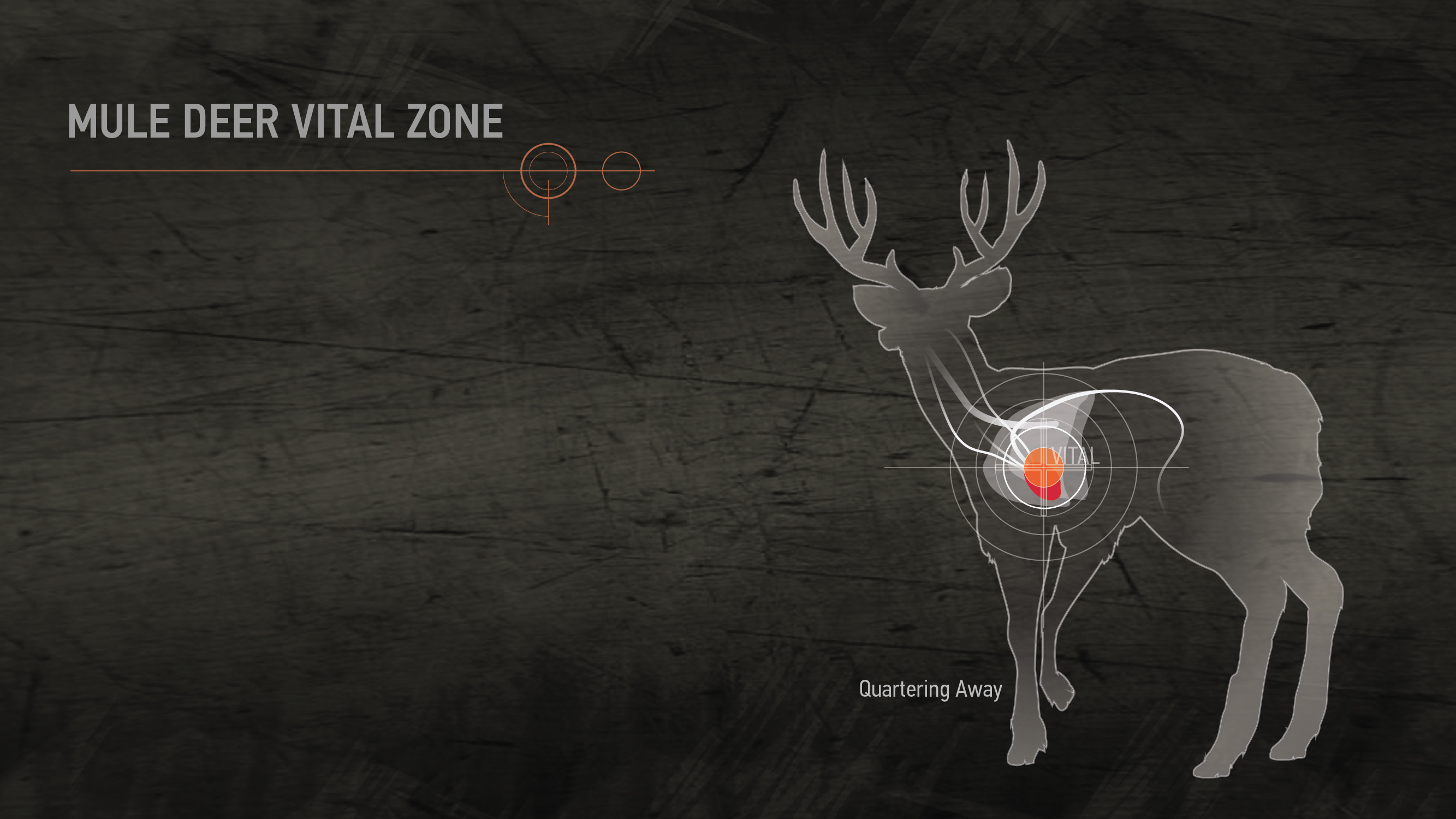
The vital zone (or target) area of a mule deer is the heart and lungs—this is the area just behind the front shoulder and it’s the only target area that will kill the deer quickly. An accurate shot will enter the heart and lungs and will stop a mule deer in its tracks. Wait for the front leg to move forward before shooting (i.e. the ‘quartering away’ shot). This leg movement will shift the shoulder bone away from the vital zone area that it protects.
Remember, if you hit them anywhere outside of the vital zone, the injured muley will run off and you’ll have to go find it to finish the task. Shoot accurately to prevent the deer from suffering and to avoid taking a hike.
Your Shot Options: Firearms
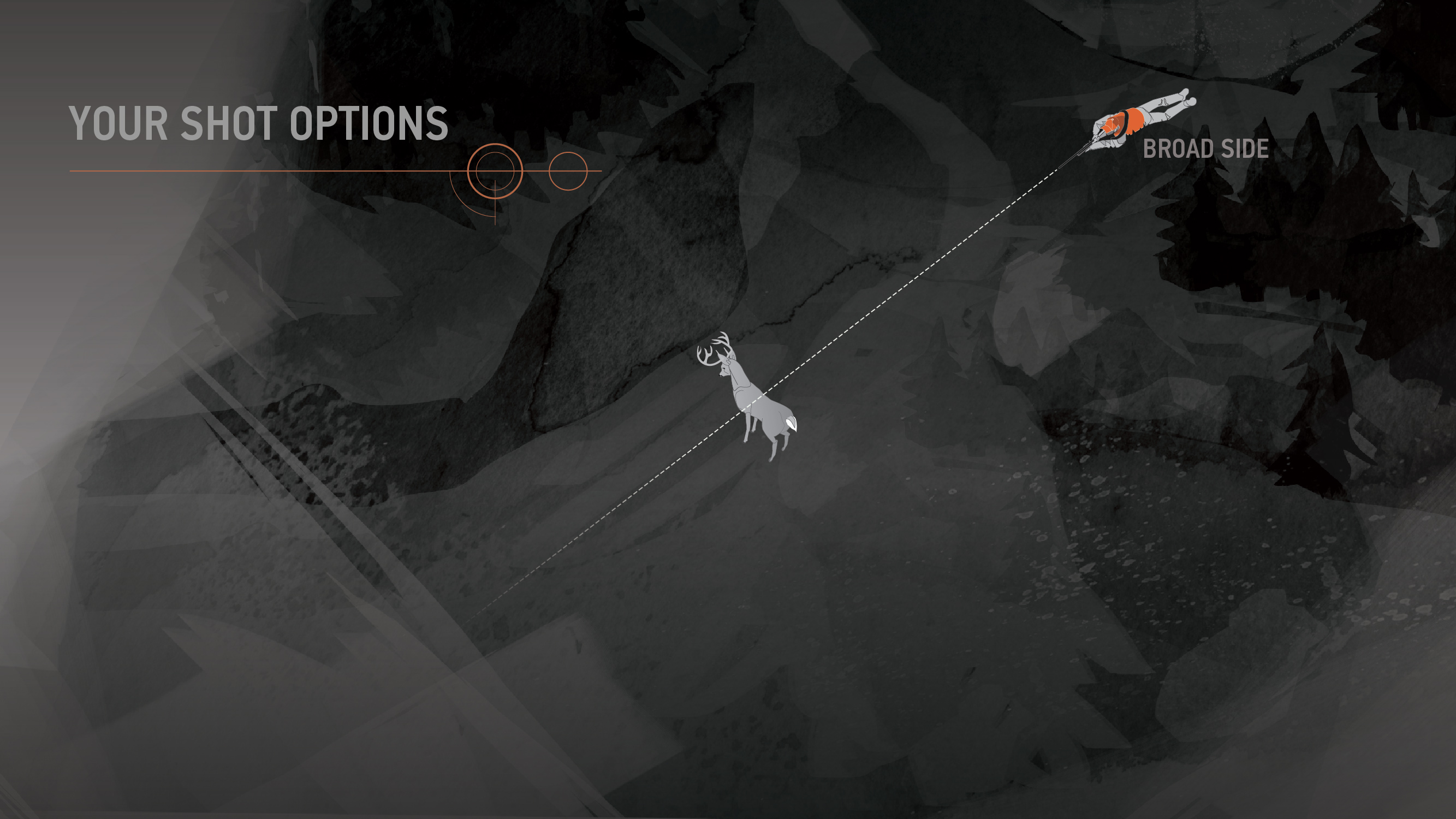
Broadside shots:
- A ‘broadside shot’ is when you’re shooting directly at the side of the mule deer.
- The broadside shot offers the best chance at hitting the shoulder and chest area.
- An accurate broadside shot will hit the shoulder/chest area and either drop the muley immediately or cause enough internal bleeding that there will be a blood trail that's easy to follow.
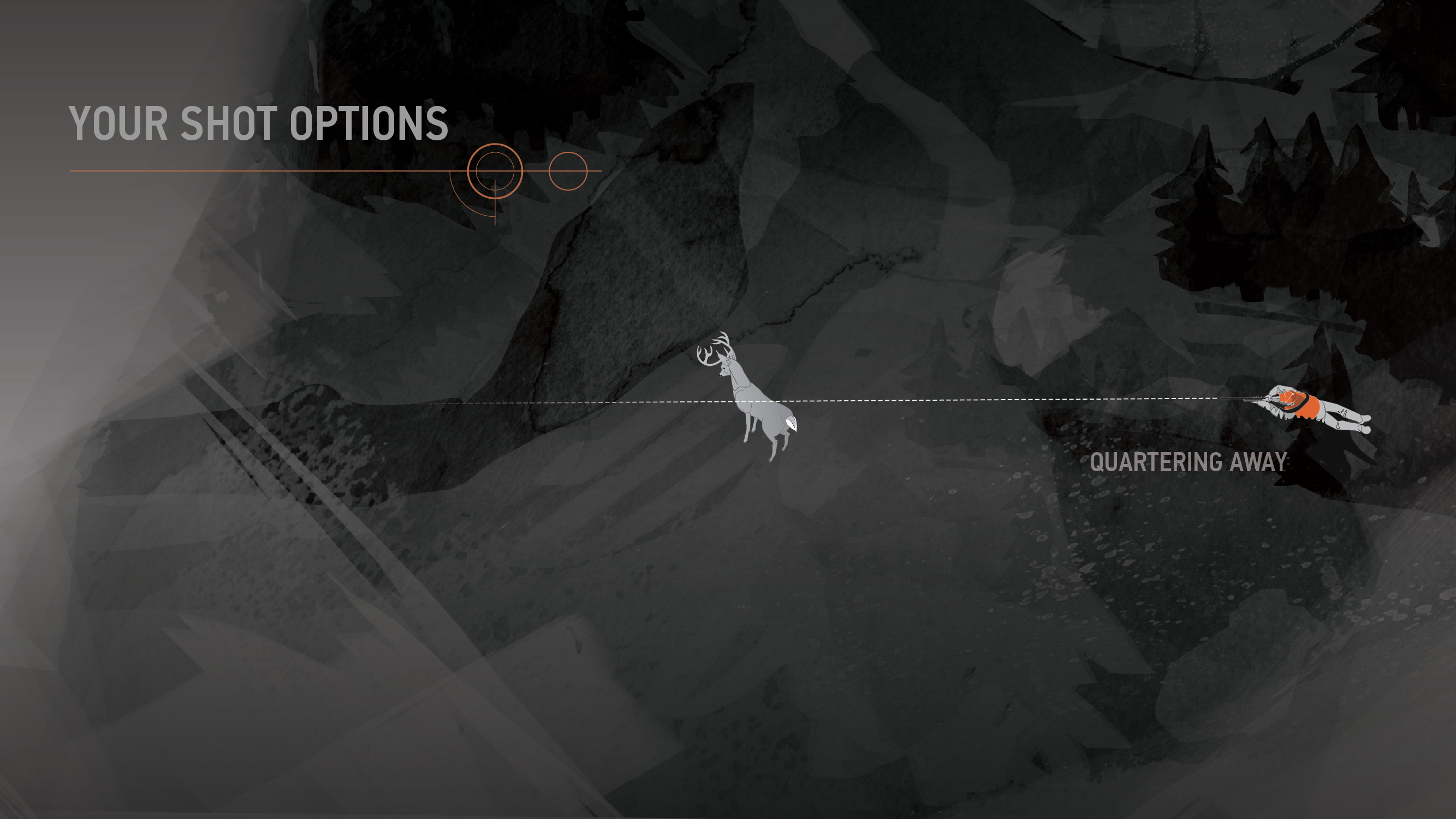
Quartering away:
- The ‘quartering away shot’ is your best shot opportunity for deer.
- This is when the deer is facing away from you and is stepping slightly forward. This exposes the vital zone area that is covered by the shoulder blade when the deer is standing still.
- An accurate ‘quartering away’ shot will hit the shoulder and chest area and either drop the deer immediately or cause enough internal bleeding that you’ll have a blood trail that's easy to follow.
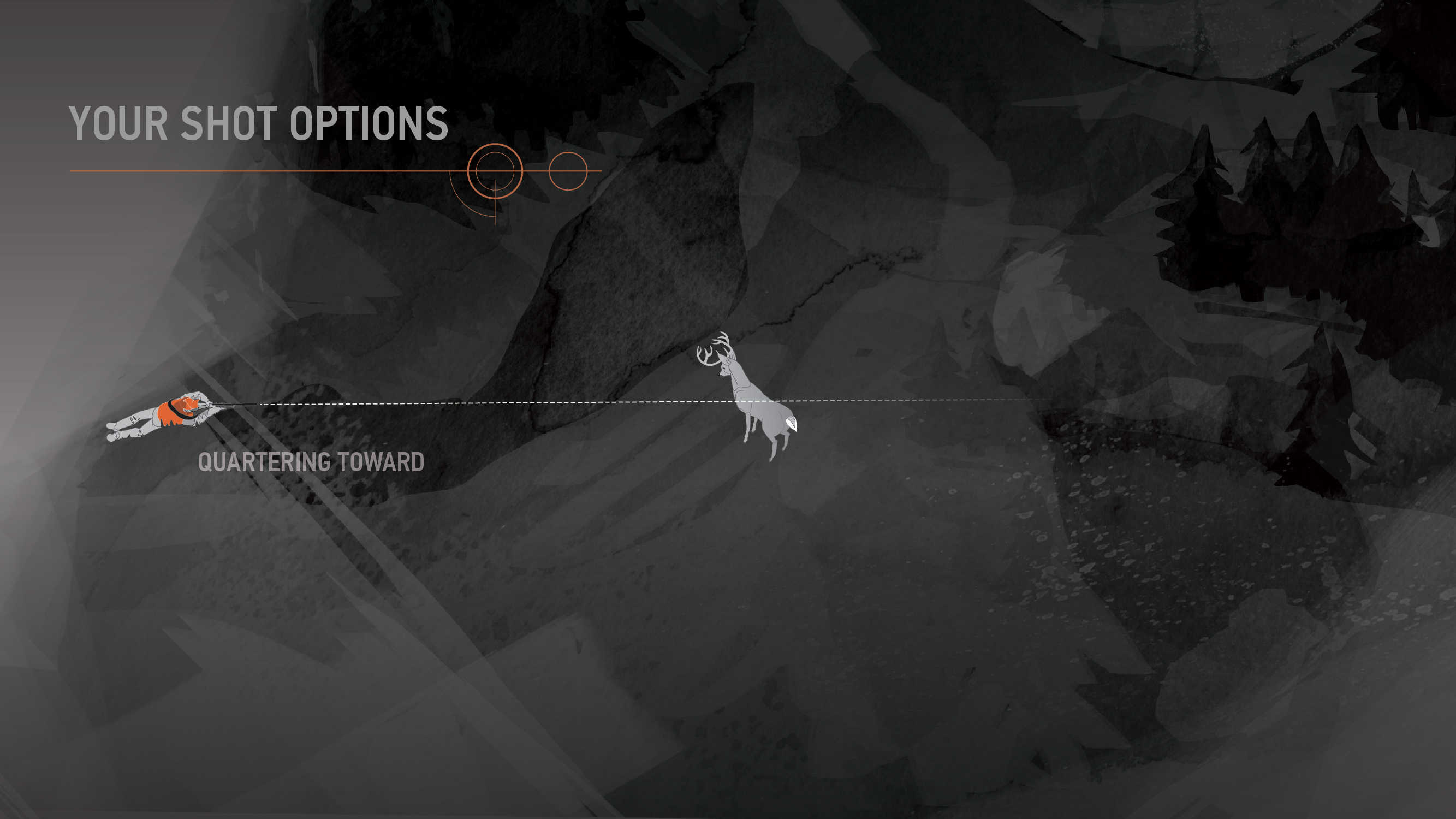
“Quartering toward:
- The ‘quartering toward shot’ is when the animal is facing you.
- If the muley is ‘quartering toward’ you, aim for the front shoulder.
- If the shot is accurate, the bullet will pass through the lungs (and potentially the heart) and will exit through the opposite shoulder blade.
Your Shot Options: Bowhunting
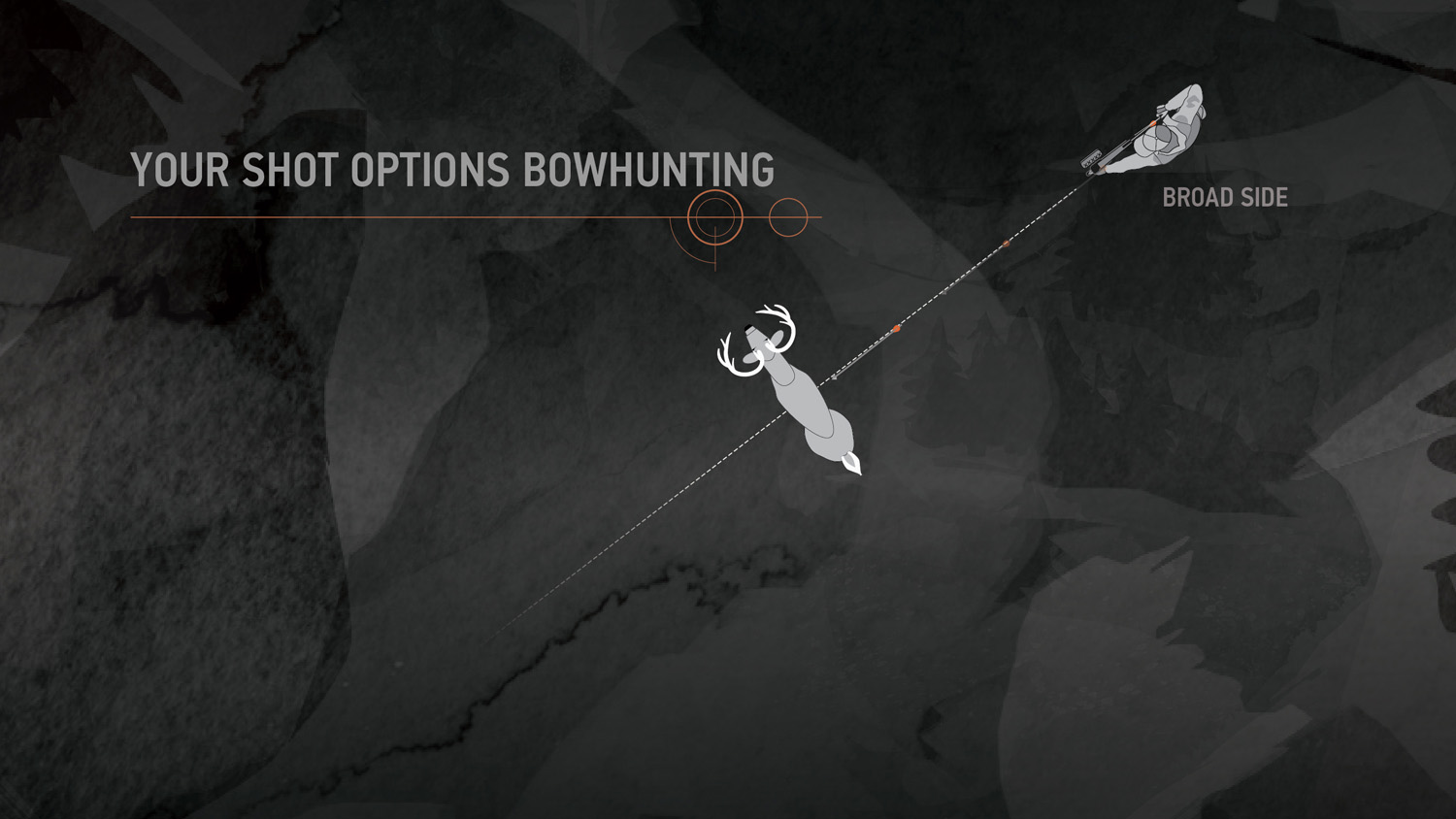
Broadside shots:
- Shooting directly at the side of a deer is the ideal shooting position for a bowhunter—the side angle requires the least amount of penetration to reach the muley’s vital organs.
- Focus on that area just behind the front shoulder and aim for the heart, keeping in mind that a high shot will hit the lungs.
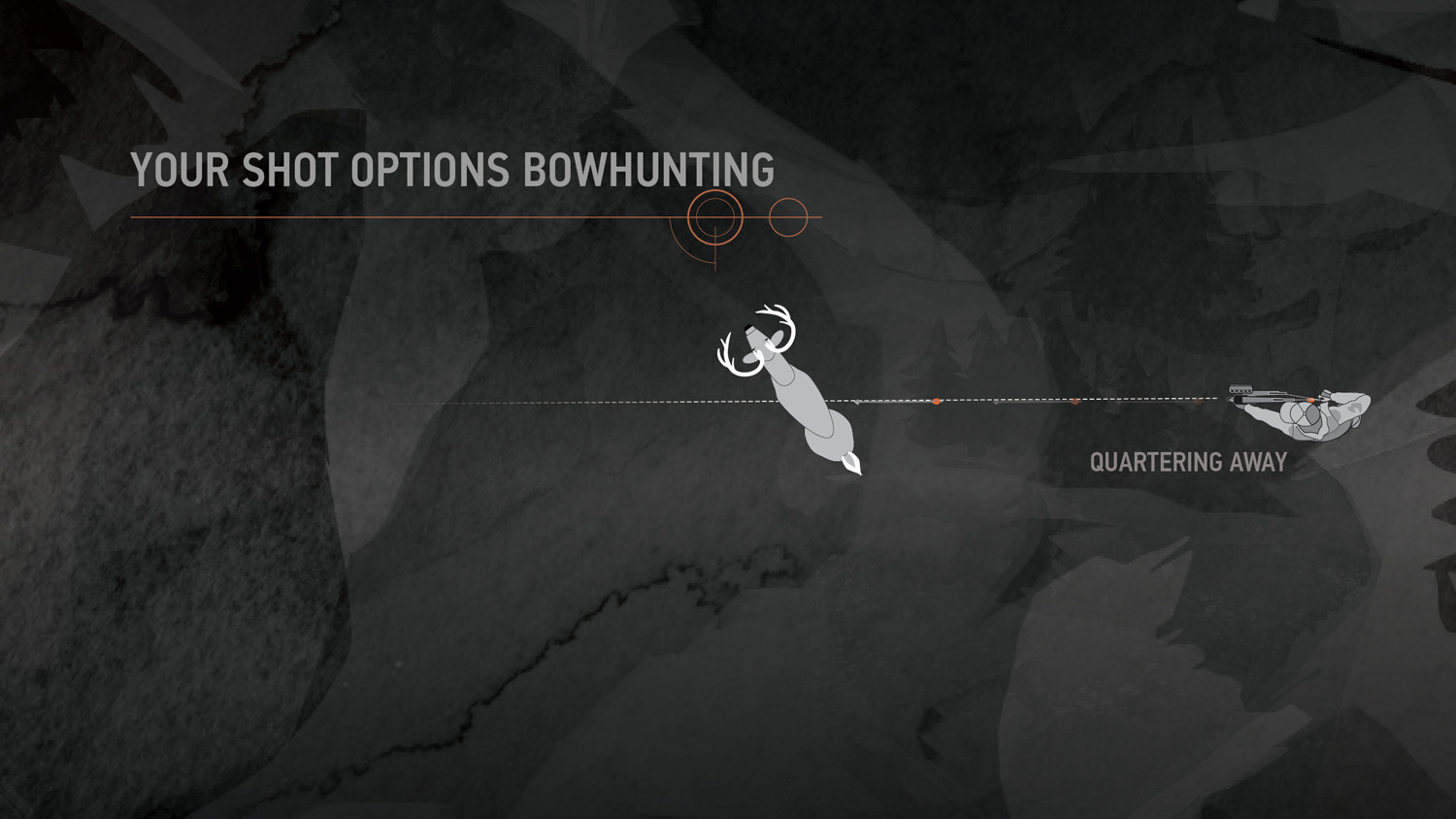
Quartering away:
- The ‘quartering away’ shot is when the deer is facing away from you and is stepping slightly forward. This exposes the vital zone area that is covered by the shoulder blade when the deer is standing still.
- This shot is ideal if taken at a 45° angle.
- If taken at more than a 45° angle, the gap between the rear hip and the front shoulder will become very small.
General Shooting Tips:
- Never shoot at the head of a deer. This is an unethical shot and the cape will be damaged if you plan on mounting the head.
- Never shoot at a deer while it’s sleeping—always practice fair chase.



